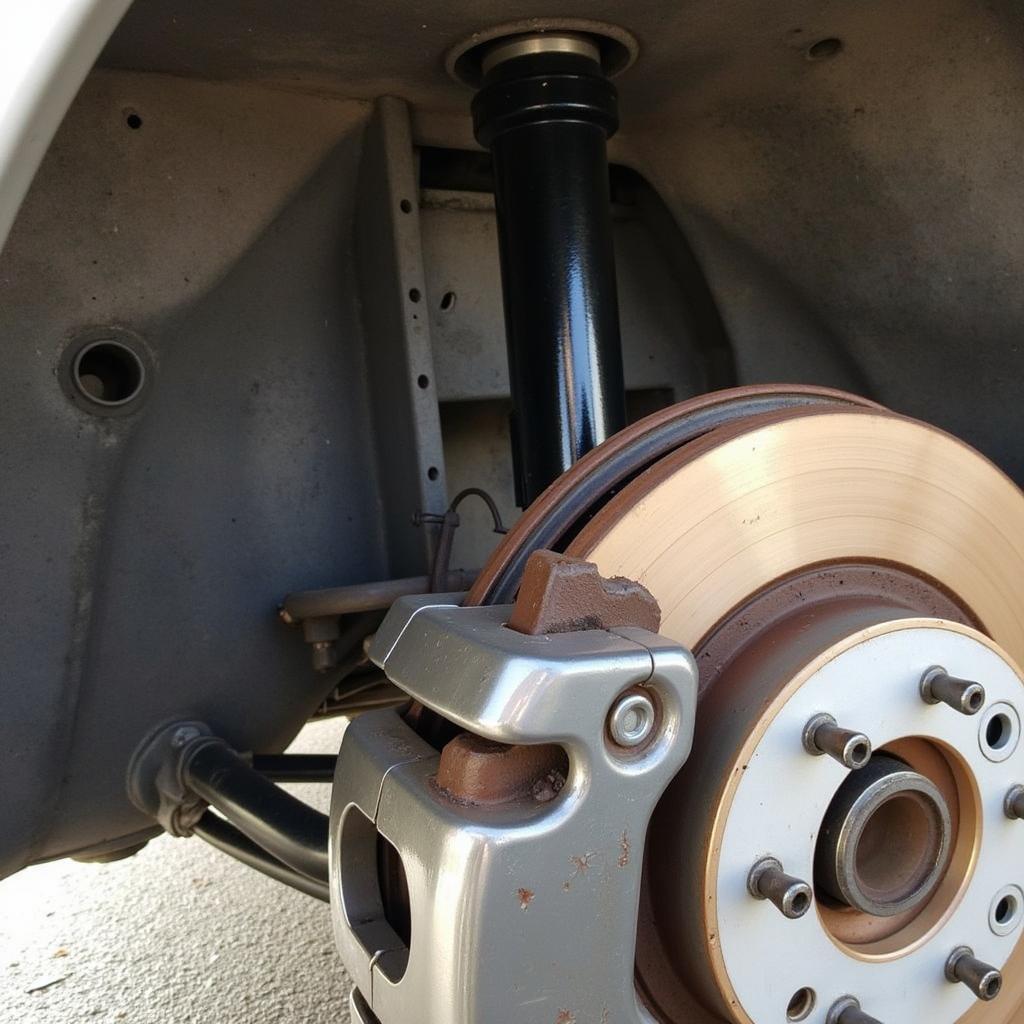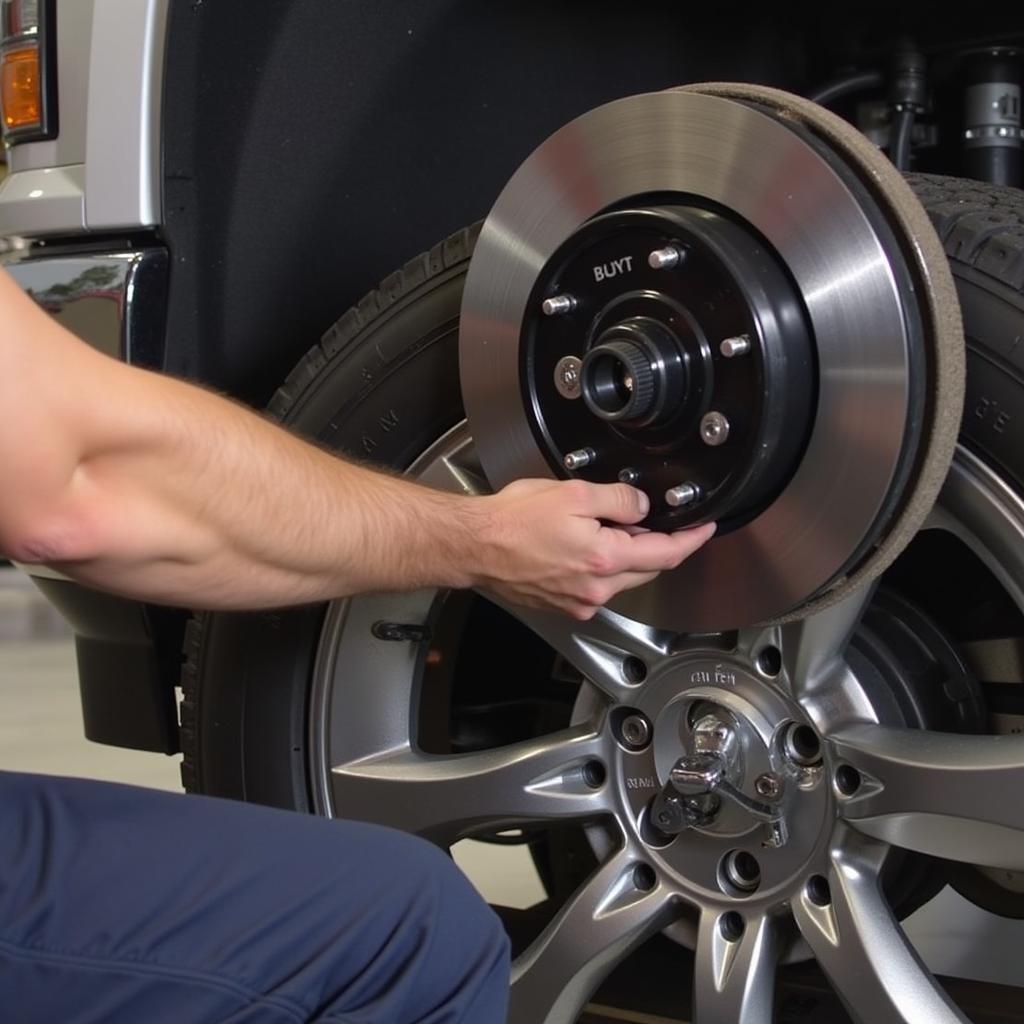A glowing brake warning light on your 1996 Ford Explorer Limited dashboard is a clear signal that something needs attention. Don’t ignore this crucial warning – it’s your vehicle’s way of telling you there’s a potential issue with your braking system. This comprehensive guide will walk you through common causes, troubleshooting steps, and potential solutions to get you back on the road safely.
Understanding Your Brake Warning Light
Before diving into the specifics of a 1996 Ford Explorer Limited, it’s important to understand the different scenarios a brake warning light might indicate.
- Parking Brake Engaged: This is the most common reason for the light. Ensure your parking brake is fully released.
- Low Brake Fluid: Your brake system relies on hydraulic pressure, and low brake fluid can significantly impact braking performance.
- Worn Brake Pads: Brake pads wear down over time. A sensor in the brake pad system triggers the warning light when it’s time for replacement.
- Brake System Malfunction: This is a more serious issue that could involve the master cylinder, brake lines, or other components.
Troubleshooting Your 1996 Ford Explorer Limited
Here’s a step-by-step guide to help you diagnose the problem:
- Check the Parking Brake: Begin with the simplest solution. Ensure the parking brake is completely disengaged. Sometimes, even a slight engagement can trigger the light.
- Inspect the Brake Fluid Level: Locate the brake fluid reservoir under the hood (refer to your owner’s manual for the exact location). The reservoir will have a “Min” and “Max” marking. If the fluid level is below the “Min” mark, add the appropriate brake fluid (DOT 3 or DOT 4, as specified in your owner’s manual) until it reaches the “Max” line.
- Caution: If you need to add brake fluid, it’s crucial to identify why the level is low in the first place. A leak in the system could be a serious safety hazard.
- Inspect the Brake Lines: Carefully examine the brake lines running along the undercarriage of your Explorer. Look for any signs of leaks, cracks, or damage. If you notice any issues with the brake lines, it’s best to consult a qualified mechanic immediately.
Common Causes Specific to the 1996 Ford Explorer Limited
While the above troubleshooting steps are a great starting point, the 1996 Ford Explorer Limited is known to have a few specific issues that can trigger the brake warning light:
- ABS Sensor Issues: The Anti-lock Braking System (ABS) relies on sensors to function correctly. A faulty ABS sensor can trigger the brake warning light. Diagnosing ABS sensor problems often requires specialized diagnostic tools.
- Rear Differential Leak: Some 1996 Explorer Limited models experienced issues with the rear differential leaking fluid onto the rear brakes. This can contaminate brake pads and lead to premature wear, triggering the warning light.
 1996 Ford Explorer Rear Differential Leak
1996 Ford Explorer Rear Differential Leak
When to Seek Professional Help
While some brake warning light issues can be addressed with DIY troubleshooting, it’s essential to know your limits. Consider seeking professional help from a qualified mechanic if:
-
The brake warning light remains on after checking the parking brake and brake fluid level.
-
You notice a soft or spongy brake pedal feel.
-
You hear unusual grinding or squealing noises when applying the brakes.
-
Your vehicle pulls to one side when braking.
-
You suspect a brake fluid leak or see visible signs of damage to brake components.
“Ignoring a brake warning light can lead to dangerous driving conditions,” says John Smith, Senior Automotive Technician at ABC Auto Repair. “It’s crucial to address the issue promptly to ensure your safety and the safety of others on the road.”
Conclusion
A brake warning light on your 1996 Ford Explorer Limited should never be ignored. By following the troubleshooting steps outlined in this guide, you can potentially identify the issue. However, if you’re unsure about any aspect of your vehicle’s braking system, it’s always best to err on the side of caution and seek professional help. Your safety is paramount.

